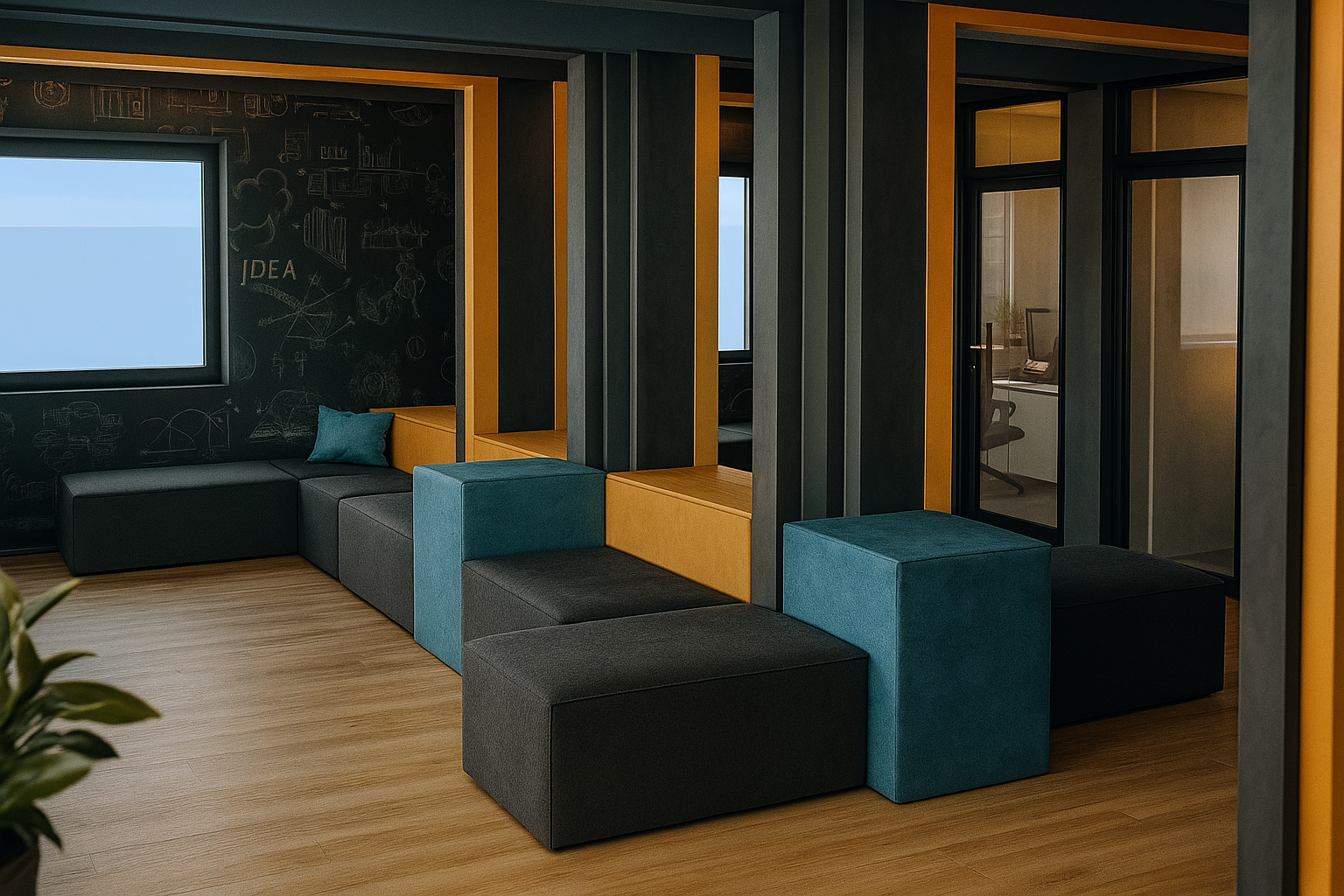When did corporate boardrooms become creativity graveyards where innovation goes to die? Employee engagement increases by 38% in workplaces with strategic breakout spaces while office wellness improves by 45% through environments that support natural human social and cognitive rhythms. According to study, workers in offices with thoughtfully designed retreat areas demonstrate 52% higher job satisfaction and 23% lower turnover rates compared to traditional desk-only environments. Yet the usual office interior design continues investing in expensive technology and training programs while ignoring the simple spatial interventions that could transform workplace culture overnight.
Design build office interior designer teams who understand human psychology create environments supporting both individual restoration and collective innovation while commercial interior designer expertise ensures breakout spaces deliver measurable business outcomes rather than functioning as decorative employee amenities.
Designing for Brain Recovery Cycles
Cognitive fatigue research demonstrates that human attention spans require periodic restoration while office interior design accommodates natural brain cycle patterns through spaces specifically designed for mental recovery rather than continuous productivity demands. Studies reveal that focused work depletes glucose in the prefrontal cortex within 90 minutes, creating measurable decreases in decision-making quality and creative problem-solving abilities that breakout spaces can restore.
Default mode network activation occurs during rest periods while commercial interior designer planning enables the brain states associated with insight generation and creative breakthrough moments. Neuroscience shows that breakthrough thinking happens when minds wander away from structured tasks, requiring physical environments that trigger this essential cognitive shift. Professional teams understand that breakout spaces function as neural reset buttons enabling sustained high performance.
Memory consolidation improves through environmental variety while interior design services create diverse spatial experiences that enhance learning retention and skill development. Research demonstrates that information processed in multiple environments becomes more accessible and applicable compared to knowledge acquired in single locations. Design build office interior designer coordination ensures breakout areas support rather than disrupt this natural learning enhancement.
Stress hormone regulation benefits from retreat environments while office wellness initiatives address cortisol accumulation that impairs immune function, sleep quality, and emotional regulation. Professional teams recognize that chronic workplace stress creates cascading health problems affecting both individual wellbeing and organizational performance. Strategic breakout design provides biological stress relief essential for sustainable workplace engagement.
Modular office furniture enables flexible restoration zones while source office furniture selections support diverse cognitive recovery needs from quiet contemplation to active movement. Canadian office furniture manufacturers increasingly understand neurological restoration requirements and provide products specifically designed for mental recovery rather than task completion.
Building Workplace Emotional Resilience
Emotional regulation skills develop through informal social interaction while office interior design creates opportunities for positive interpersonal experiences that strengthen workplace relationships and psychological safety. Research shows that employees who report having close friends at work demonstrate 43% higher engagement levels and 12% better performance outcomes compared to socially isolated workers.
Vulnerability practice occurs in low-stakes social environments while design build office interior designer approaches create spaces where employees can share challenges, celebrate successes, and build authentic connections without formal meeting pressure. Professional teams understand that psychological safety develops through repeated positive informal interactions that breakout spaces naturally facilitate.
Conflict resolution skills improve through casual conversation while commercial interior designer expertise positions breakout areas to enable natural conflict de-escalation through environmental psychology. Comfortable seating arrangements, soft textures, and calming environments reduce defensive responses while encouraging empathetic communication essential for healthy workplace relationships.
Empathy development happens through cross-departmental mixing while interior design services coordinate breakout placement to encourage interactions between employees who rarely collaborate in formal work settings. Professional teams understand that organizational silos dissolve when people discover shared interests and common challenges through informal conversation opportunities.
Emotional contagion spreads positive workplace culture while office furniture design supports group dynamics that amplify enthusiasm, optimism, and collaborative energy throughout organizations. Advanced modular office furniture arrangements enable both intimate conversations and larger group gatherings that reinforce cultural values through social reinforcement.
Addressing Multi-Generational Workplace Needs
Generational communication preferences vary significantly while office interior design accommodates different social interaction styles from Baby Boomers preferring structured conversation to Gen Z employees seeking casual collaborative experiences. Professional teams recognize that effective breakout spaces serve diverse generational needs simultaneously without segregating age groups.
Technology integration expectations differ across generations while commercial interior designer coordination balances high-tech features with traditional comfort elements ensuring all employees feel welcome and competent. Advanced systems provide optional technology engagement rather than mandatory digital interaction that might exclude less technology-comfortable workers.
Learning style accommodation supports knowledge transfer while design build office interior designer planning creates environments where experienced employees naturally mentor younger colleagues through informal storytelling and wisdom sharing. Professional spatial design encourages cross-generational relationships that preserve institutional knowledge while welcoming fresh perspectives.
Work-life balance definitions vary generationally while interior design services create flexible environments supporting different approaches to workplace wellness and personal time integration. Younger workers might prefer active social spaces while older employees seek quiet reflection areas, requiring diverse breakout options within comprehensive workplace design.
Career development conversations happen informally while office wellness strategies position breakout spaces to enable mentorship relationships and professional guidance exchanges that support employee growth across different career stages and generational perspectives.
Strengthening Organizational Network Effects
Weak tie formation creates innovation opportunities while office interior design enables chance encounters between employees who rarely interact formally but might collaborate effectively given proper introduction opportunities. Research demonstrates that breakthrough innovations often emerge from unexpected connections between distant organizational networks rather than close working relationships.
Information flow acceleration improves through strategic breakout placement while Canadian office furniture selections support rapid knowledge sharing and problem-solving coordination that formal meeting structures cannot accommodate effectively. Professional teams understand that organizational agility depends on informal communication networks that breakout spaces naturally strengthen.
Cross-functional project formation occurs through casual conversation while source office furniture decisions enable spontaneous collaboration planning and resource sharing discussions that formal project management processes often miss. Advanced modular arrangements accommodate impromptu planning sessions and creative brainstorming without booking requirements or scheduling delays.
Organizational culture transmission happens through storytelling while interior designer expertise creates environments where company values, success stories, and cultural norms spread naturally through employee conversations rather than formal communication programs. Professional breakout design amplifies positive cultural messages through environmental reinforcement.
Trust building accelerates through shared experiences while office interior design facilitates informal team bonding and personal connection development that strengthens collaborative effectiveness in formal work settings. Research shows that teams with strong social bonds outperform task-focused groups by significant margins across diverse performance metrics.
Breakout Spaces as Competitive Advantage Tools
Talent attraction improves significantly through workplace experience while design build office interior designer expertise creates environments that demonstrate organizational values and employee care through tangible spatial investments. Professional teams understand that top candidates evaluate workplace culture through physical environment quality and employee amenity provision.
Client impression management benefits from dynamic workplace environments while commercial interior designer coordination ensures breakout spaces reflect brand identity and organizational sophistication during facility tours and client meetings. Advanced design creates multiple impressive spaces that showcase company culture while supporting daily operational needs.
Recruitment ROI increases through employee referral improvements while office wellness investments reduce recruitment costs by encouraging existing employees to recommend friends and colleagues for open positions. Research shows that satisfied employees make 47% more referrals compared to disengaged workers, significantly reducing hiring costs and timeline.
Productivity measurement shows quantifiable returns while interior design services document performance improvements, absenteeism reductions, and wellness metric enhancements that justify breakout space investments through measurable business outcomes. Professional teams track these metrics to demonstrate ROI and guide future workplace investments.
Innovation pipeline strengthening occurs through creative environment provision while modular office furniture enables experimental project development and prototype testing that advances organizational competitive positioning. Canadian office furniture manufacturers provide specialized products supporting innovation activities from brainstorming to prototype development.
Design build office interior designer approaches offer superior breakout space implementation through integrated planning that coordinates architectural elements, furniture selection, and operational requirements from project inception. Professional teams eliminate the coordination challenges that plague traditional design approaches while ensuring breakout investments deliver maximum employee engagement and business performance returns.
Frequently Asked Questions (FAQ):
How do design build office interior designer teams integrate neuroscientific principles into breakout space design while maintaining practical workplace functionality?
Design build office interior designer teams integrate neuroscientific restoration principles through comprehensive planning that coordinates cognitive recovery requirements with operational needs from project inception. They specify environments supporting default mode network activation and stress hormone regulation while maintaining acoustic and visual compatibility with productive work areas. Commercial interior designer expertise ensures breakout spaces trigger essential mental reset states without disrupting concentrated work activities. Professional teams coordinate diverse spatial experiences supporting memory consolidation and creative breakthrough moments while ensuring practical functionality through modular office furniture that adapts to varying usage patterns throughout daily work cycles.
What specific strategies do commercial interior designer teams use to address multi-generational workplace needs through breakout space design?
Commercial interior designer teams address generational differences through flexible environments accommodating varying communication preferences and technology comfort levels while encouraging cross-generational interaction rather than age segregation. They balance high-tech features with traditional comfort elements ensuring all employees feel welcome regardless of digital fluency. Office interior design approaches include both active social zones for younger workers and quiet reflection areas preferred by older employees. Interior design services coordinate furniture selections supporting diverse learning styles while creating spaces where experienced employees naturally mentor younger colleagues through informal knowledge transfer and wisdom sharing conversations.
How does Canadian office furniture selection specifically support the neurological and social functions essential for effective breakout spaces?
Canadian office furniture manufacturers provide specialized products designed for cognitive restoration and social interaction rather than task-focused work activities. They offer modular office furniture with soft textures and curved forms that contrast with angular desk environments while supporting relaxed postures essential for default mode network activation. Source office furniture decisions coordinate with neuroscientific research ensuring seating arrangements encourage both intimate conversations and larger group dynamics. Interior designer coordination includes acoustic properties and ergonomic features supporting extended informal interaction while maintaining comfort standards that enable natural stress hormone regulation and emotional resilience development through positive workplace experiences.
Key Takeaways
- Employee engagement increases by 38% in workplaces with strategic breakout spaces while office wellness improves by 45% through cognitive restoration support
- Commercial interior designer expertise in neuroscientific restoration creates environments supporting natural brain recovery cycles and default mode network activation
- Design build office interior designer coordination addresses generational workplace differences accommodating diverse communication preferences and learning styles
- Office interior design supporting emotional intelligence cultivation builds workplace resilience through informal social interaction and psychological safety development
- Social capital development through strategic breakout placement accelerates information flow and cross-functional collaboration opportunities
- Interior design services documenting productivity improvements demonstrate quantifiable ROI through performance metrics and wellness outcome measurements
- Modular office furniture enabling flexible restoration zones supports diverse cognitive recovery needs from quiet contemplation to active movement
- Canadian office furniture manufacturers provide specialized products designed for neurological restoration and innovation activities rather than task completion
- Source office furniture decisions coordinate with brain science research ensuring breakout spaces trigger essential cognitive shifts for sustained performance
- Office wellness strategies positioning breakout areas enable mentorship relationships and professional development conversations across different career stages
Breakout spaces represent strategic infrastructure supporting human psychology and organizational network effects rather than employee amenities. Professional commercial interior designer teams who understand neuroscience, emotional intelligence, and generational dynamics create environments that measurably enhance workplace culture while delivering competitive business advantages. When companies invest in comprehensive breakout systems through experienced design-build office interior designer partnerships and coordinate installations through knowledgeable interior design services, they achieve sustainable improvements in employee engagement, innovation capacity, and talent retention while creating workspaces that actively support human flourishing and organizational success.

